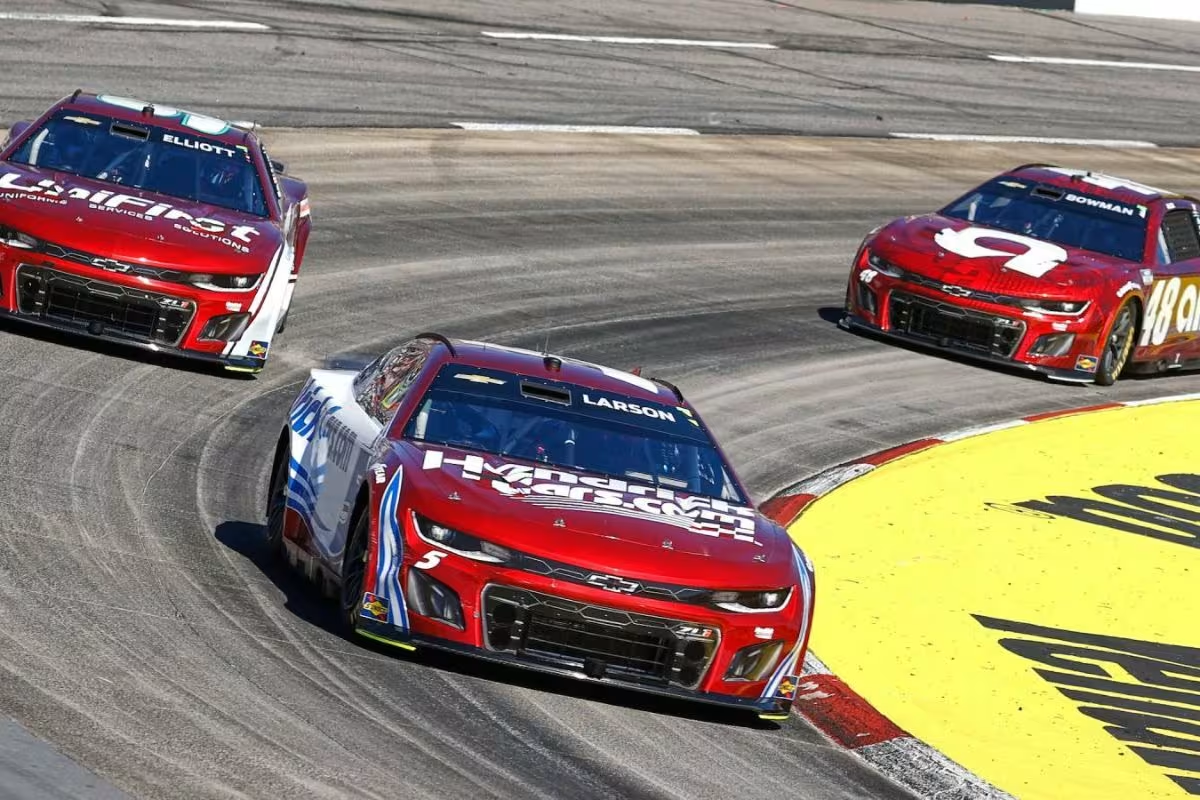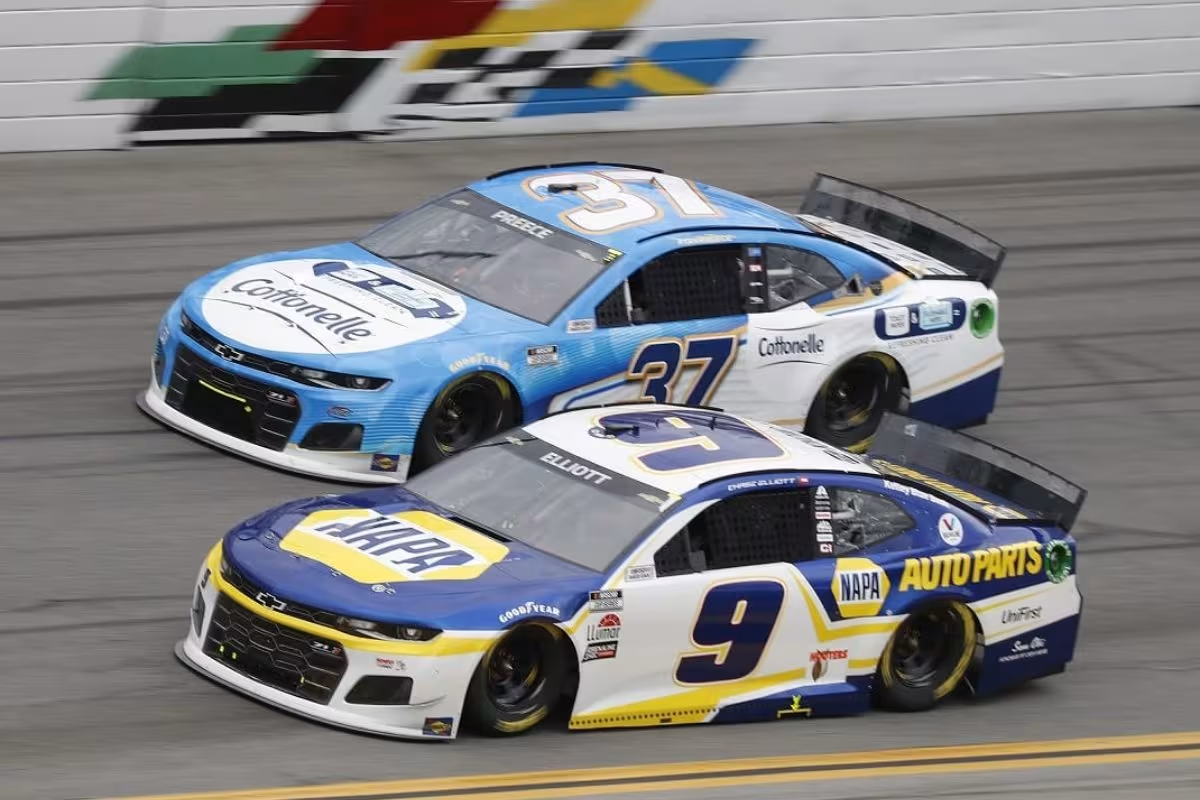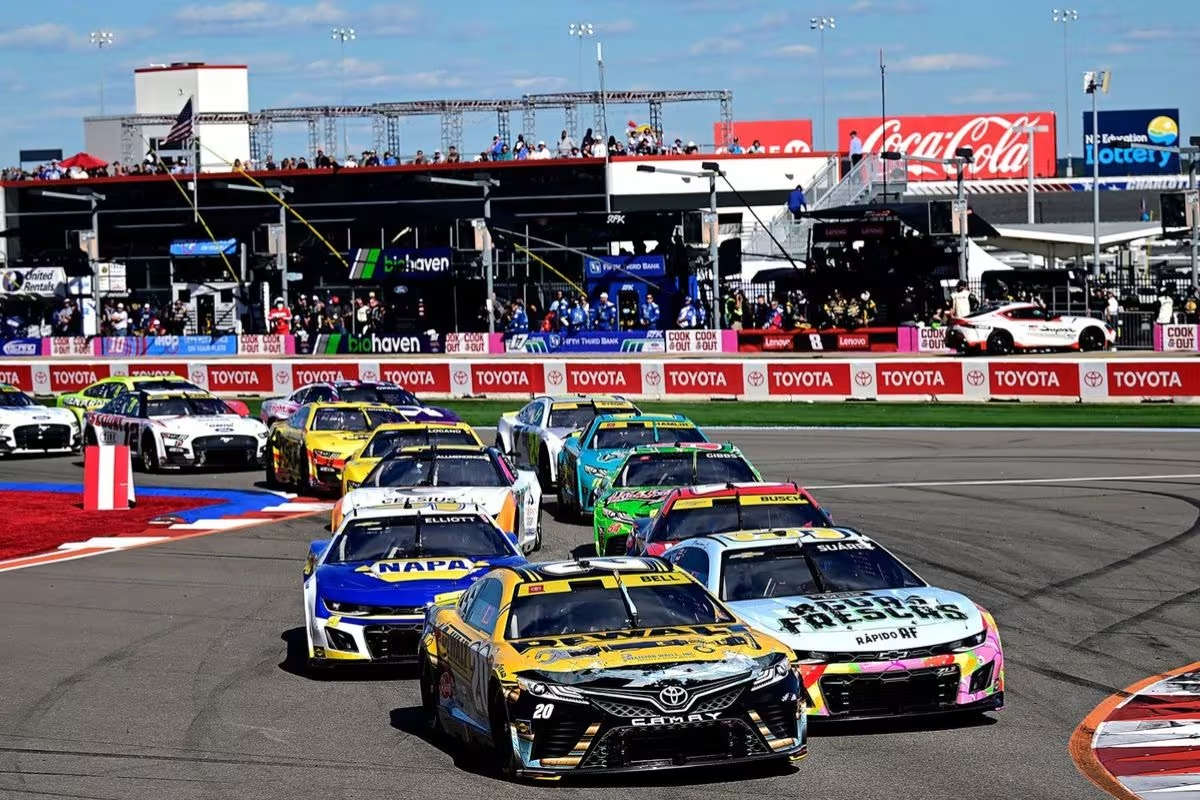NASCAR gets record numbers at its recent Roval race, with Kyle Larson pulling off an exciting win. But some fans are asking if the sport is starting to lose its original crowd. With NASCAR focusing more on road races, could it be leaving behind the loyal fans who loved the fast oval tracks? What’s really happening and what this could mean for the future of NASCAR.
Key Highlights
- The Roval event drew an average viewership of 2.42 million, the highest since 2021, signaling a resurgence in interest.
- NASCAR’s increased focus on road racing may attract younger fans but risks alienating traditional viewers who prefer oval tracks.
- Controversies surrounding officiating and disqualifications, like Alex Bowman’s, may frustrate loyal fans despite the excitement generated for newer audiences.
- Tactical race strategies, such as pit stops and tire choices, can create thrilling moments but may confuse or disengage traditional NASCAR followers.
- Hendrick Motorsports’ setbacks and playoff implications highlight the growing competitiveness, which traditional fans might view as detracting from their preferred racing dynamics.
Race Overview and Thrilling Moments
Amidst the backdrop of heightened anticipation, the NASCAR Cup Series race at Charlotte Roval proved to be an electrifying spectacle, characterized by both tactical navigation and unexpected twists. The newly reconfigured road course, already a subject of controversy prior to the event, set the stage for intense competition, particularly given its significance as the concluding race of the Round of 12 stage.
Drivers such as Denny Hamlin, Tyler Reddick, and Joey Logano entered the race with the tension of securing their positions for the next phase of the playoffs. The calculated decisions made by teams regarding pit stops, tire choices, and fuel management were on full display, emphasizing the critical role that tactical expertise plays in road racing.
As the race unfolded, the unpredictability of the course, combined with the significant stakes, resulted in a series of thrilling moments that kept fans on edge. Notably, the race’s climax, which only revealed the top eight drivers’ standings after the final lap, encapsulated the drama inherent in NASCAR’s playoff format.
Despite the controversies surrounding officiating decisions, the race’s excitement resonated with spectators, both in the grandstands and at home.
Viewership Increase and Road Racing Strategy
The surge in viewership for the NASCAR Roval race reflects a calculated shift within the organization, as it seeks to broaden its appeal to a more diverse audience. Historically, road course events have struggled to captivate the traditional NASCAR fan base, which often favors the high-speed action of oval tracks.
Nevertheless, NASCAR’s increasing investment in road racing—transitioning from a few exhibition races to 4-6 point races per season—demonstrates a tactical pivot aimed at attracting new viewers and revitalizing interest in the sport.
The recent uptick in viewership, reaching an average of 2.42 million during the latest Roval event, signifies a critical moment for NASCAR. This figure marks the highest viewership since 2021, a promising recovery from previous declines witnessed in the Gen-7 era.
“Per NASCAR, Sunday’s playoff race at the Roval had a 1.35 household rating with an average of 2.42 million viewers. This marks the most-watched Roval race since 2021. For the six playoff races overall in 2024, ratings are up 6 percent year-over-year.” – Jordan Bianchi
The compelling victory of Kyle Larson, who secured his sixth Cup Series win, certainly played a role in this resurgence. Additionally, data indicating a 6 percent year-over-year increase in ratings across playoff races highlights a broader trend toward revitalization.
NASCAR’s emphasis on road racing is not merely a reactionary measure; it is a calculated approach to engage a wider audience demographic, including younger and more diverse fans.
Post-Race Disqualification and HMS Setback
Notable repercussions followed the termination of the Roval race as NASCAR disqualified the #48 car, driven by Alex Bowman, for being underweight during the post-race inspection. This decision not only eliminated Bowman from the playoffs but also inflicted considerable damage to the aspirations of Hendrick Motorsports (HMS) in the championship hunt.
The implications of this disqualification extend beyond the immediate loss, highlighting critical issues within the team’s preparation and compliance standards.
- The failure to meet weight requirements raises questions about the team’s technical strategies and race-day execution.
- Alex Bowman’s disqualification opened the door for competitors such as Joey Logano, who, despite not advancing, benefitted from HMS’s misfortune.
- The incident emphasizes the stringent nature of NASCAR’s regulations, reinforcing the importance of precision in vehicle specifications.
Hendrick Motorsports appeared poised to dominate the Round of 8, supported by a roster of talented drivers and a historical track record. However, the disqualification shifted the competitive landscape, providing an unexpected lifeline to rivals like Joey Logano and Tyler Reddick.
Hendrick Motorsports’ Statement and Upcoming Races
Acknowledging the gravity of their recent disqualification, Hendrick Motorsports issued a statement reflecting on the team’s oversight regarding post-race weight compliance. The team’s admission highlights the inherent challenges in maneuvering NASCAR’s strict regulatory framework.
They noted, “NASCAR allows a clear margin to account for the difference in pre- and post-race weight. After a thorough review by our team and the sanctioning body, we simply did not give ourselves enough margin to meet the post-race requirement.” This admission emphasizes a critical aspect of competitive motorsport, where precision and adherence to regulations are paramount.
“Although unintentional, the infraction was avoidable. We are extremely disappointed to lose a playoff spot under these circumstances and apologize to our fans and partners.” – Hendrick Motorsports
The consequences of this oversight extend beyond immediate penalties; they disrupt the team’s championship strategy, as they expressed disappointment in losing a playoff spot under these circumstances.
Their apology to fans and partners reflects an understanding of the broader implications for team morale and sponsorship relations, which are essential in a sport heavily reliant on fan engagement and commercial partnerships.
Looking ahead, the NASCAR Cup Series shifts back to traditional ovals, commencing with the Las Vegas Motor Speedway. This significant race will serve as a litmus test for Hendrick Motorsports’ resilience, as they maneuver through the Round of 8 against a backdrop of heightened scrutiny.
News in Brief: NASCAR Gets Record Numbers
The recent NASCAR Roval event achieved a notable viewership of 2.42 million, highlighting a growing interest in road racing strategies. However, traditional fans expressed dissatisfaction, reflecting a potential disconnect between evolving race formats and established fan expectations.
The post-race disqualification of a prominent team further complicates the narrative, suggesting that while viewership metrics may indicate success, the core fanbase’s sentiments warrant careful consideration. Future races will likely need to tackle these divergent perspectives to maintain engagement.
ALSO READ: Hendrick Motorsports Turns Its Back on Alex Bowman’s Last Chance to Save His Championship Hopes



